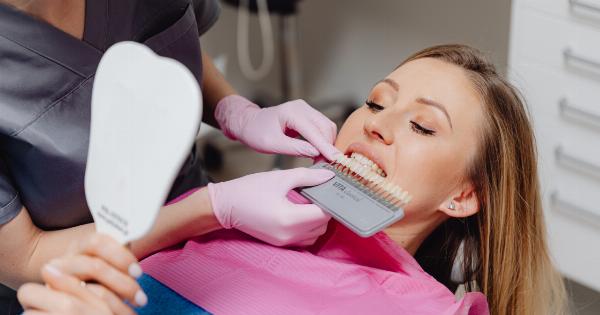Tampons are a popular menstrual product used by women worldwide. They are designed to provide absorption and security during periods, allowing women to go about their daily activities without discomfort or worry of leakage.
If you are new to tampons or looking for some helpful tips and guidance, this complete guide will walk you through everything you need to know about using tampons.
1. Understanding Tampons
Before diving into how to use tampons, it is essential to understand their basic anatomy. Tampons consist of a cylindrical shape, typically made of soft cotton material, which absorbs menstrual flow.
They come with an insertion tube (applicator) or without (non-applicator) and contain a string at the bottom for easy removal.
2. Choosing the Right Tampon
When choosing tampons, it’s important to consider absorbency, comfort, and your flow intensity. Tampons come in various absorbency levels, such as light, regular, super, or super plus, to accommodate different flow volumes.
Start with regular absorbency if you’re unsure.
It’s also crucial to select the appropriate applicator. Applicator tampons have a plastic or cardboard tube that aids in insertion, while non-applicator tampons require manual insertion with your fingers.
Decide which option feels most comfortable for you.
3. Read the Instructions
Before using a tampon, carefully read the instructions provided by the manufacturer. Each brand might have slightly different usage instructions, so familiarize yourself with the specific product you are using.
Following the instructions will help ensure proper insertion and minimize any potential risks.
4. Wash Your Hands
Prior to handling any menstrual product, it is essential to wash your hands thoroughly with mild soap and clean water. This step helps maintain proper hygiene, reducing the risk of introducing harmful bacteria into your vaginal area.
5. Find a Comfortable Position
When inserting a tampon, finding a comfortable position is key. Some women prefer standing with one leg elevated, propping a foot on the toilet seat, while others find sitting on the toilet more comfortable.
Experiment with different positions to discover what works best for you.
6. Relax and Take Your Time
It’s important to relax and take your time during the insertion process. Tension and rushing can make insertion more difficult and uncomfortable. Take slow, deep breaths, and stay calm throughout the process.
7. Insertion with Applicator Tampons
If you’ve chosen an applicator tampon, follow these steps for insertion:.
a. Remove the tampon from its packaging, ensuring the string hangs freely.
b. Settle in a comfortable position and hold the tampon applicator between your thumb and middle finger, with the smaller end (where the string is) facing downward.
c. With your other hand, part your labia to locate the vaginal opening.
d. Gently insert the tampon applicator into the vaginal opening at a 45-degree angle, using the index finger to guide it further until your fingers or the applicator grip gets flush against your body.
e. Push the applicator’s inner tube using your index finger while holding the outer tube steady, until the tampon is fully inserted.
f. Remove the applicator by pulling it out gently, leaving the tampon in place.
8. Insertion with Non-Applicator Tampons
If you’re using a non-applicator tampon:.
a. Remove the tampon from its packaging, ensuring the string hangs freely.
b. Sit or stand in a comfortable position, allowing easy access to your vaginal opening.
c. Hold the tampon at the bottom, using your thumb and middle finger.
d. Part your labia to locate the vaginal opening.
e. With your index finger, gently insert the tampon into the vaginal opening, aiming it backward and slightly upward.
f. Push the tampon upwards until your fingers feel that it’s fully inserted.
9. Ensure Proper Placement
After inserting the tampon, it’s crucial to ensure it is placed correctly:.
a. You should not feel any discomfort when sitting or walking if the tampon is inserted properly.
b. When you gently tug on the string, you should feel resistance, indicating the tampon is in place.
c. The string should hang outside the vaginal opening for easy removal.
10. Changing and Removing Tampons
To maintain good hygiene and prevent leakage, tampons should be changed every 4-8 hours, or more frequently if your flow is heavy.
To remove a tampon:.
a. Wash your hands thoroughly.
b. Relax your muscles and find a comfortable position.
c. Gently tug on the string to slide the tampon out of your vagina.
d. Wrap the used tampon in toilet paper or tissue and dispose of it in a trash bin. Never flush tampons down the toilet.
Conclusion
Using tampons is a personal choice, and it might take some practice to feel comfortable and confident with insertion and removal. Remember to always follow the instructions provided with the tampon packaging and prioritize your hygiene.
With time and experience, tampons can become a convenient and effective menstrual product for you.































